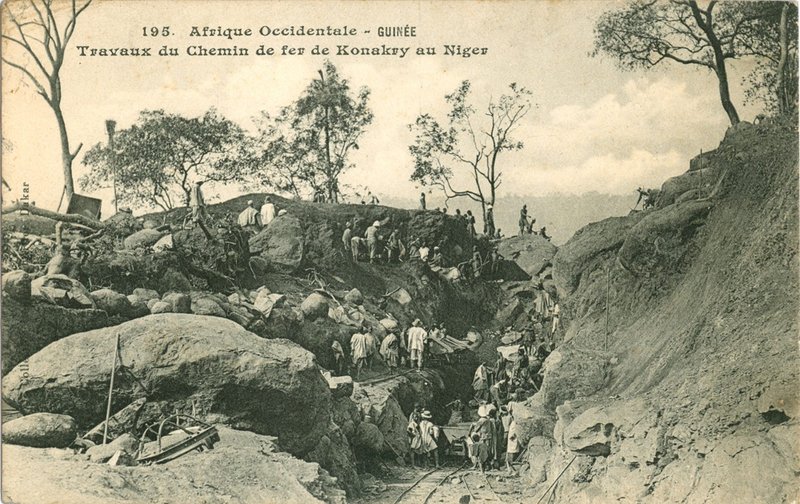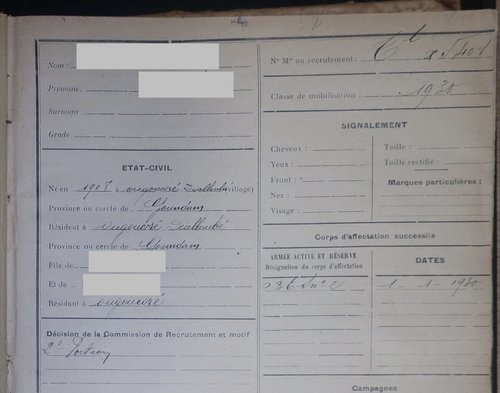
Forced labour in French West Africa
The French colonial authorities recruited indigenous African soldiers from the start of the conquest of West Africa in the 19th century, with the aim of conquering the interior and conserving the newly acquired territories. These African troops were called "Tirailleurs Sénégalais", the first permanent unit of African soldiers having been recruited in Senegal in 1857. This conscription system became almost universal in French West Africa until independence in the 1960s. To cope with a labour shortage in the colonised territories, some of the reservists in this colonial army were forcibly employed on infrastructure work between 1927 and 1948.
The French colonial administration drew up individual registers of young Africans recruited into the French colonial army as soldiers, forced labourers or reservists.
Extracting information from individual records
In order to study the impact of this conscription system on local development, particularly in Mali, Marion Richard, Zhexun Mo and Ismaël Yacoubou Djima, PhD students at Paris School of Economics, contacted TEKLIA to automatically extract information from the individual records of soldiers and conscripts from French West Africa held in the archives of the French Defence Historical Service.
The aim was to automatically extract around twenty pieces of information that may be present in the files, and filled in by hand: first and last name, marital status, postings, convictions, etc.
Model training
A random and representative sample of 470 double pages was manually entered into a tabular file to form the training set for the model. Using an integrated extraction model that performs the localisation, recognition and typing of handwritten information in a single step, TEKLIA was able to automatically extract the desired information with a quality rate (F-measure) of between 85% and 98%.
The model was used to automatically process 197,000 individual records. The results have been delivered to the researchers and are currently being analysed.
To find out more about the model:
- New models, new possibilities for extracting information from digitised documents
- Form Processing and Key-Value Extraction Solutions
An example of recognition
The following form was processed automatically by the model. The template processed a non-anonymised version.

- Surname: XXX
- Firstname: XXX
- Year of birth: 1908
- Place of birth: Ougoucoré Dialloubé
- Province ou cercle de : Goundam
- Country : Mali
- Resident in : Ougoucoré Dialloubé
- Province ou cercle de.1 : Goundam
- Son of (father) : XXX
- Son of (mother) : XXX
- Mobilisation class : 1930
- Commission decision : 2ème portion
- Successive corps of assignment : 1
- Previous convictions : 0
- From : 1-1-1930
- Occupation : pêcheur
Conclusion
Document recognition technologies now offer the possibility of extracting, on a large scale, handwritten information that was previously inaccessible or could only be exploited by means of time-consuming and costly manual indexing. This technological advance opens up unprecedented horizons for research in the human sciences and economics, revolutionising the way we approach and analyse our historical and cultural heritage.
Contact us to find out more!
References
Illustration : GUINÉE – Travaux du Chemin de fer de Konakry au Niger. CGF1 195. Collection Edmond Fortier. https://edmondfortier.org.br/
[1] Babacar Fall, « Le travail forcé en Afrique occidentale française (1900-1946) », Civilisations, 41, 1993, mis en ligne le 30 juillet 2009, consulté le 02 juin 2023. URL : http://journals.openedition.org/civilisations/1717 ; DOI : https://doi.org/10.4000/civilisations.1717
[2] Catherine B. Ash, « Forced Labor in Colonial West Africa », History Compass 4/3 (2006): 402–406, https://doi.org/10.1111/j.1478-0542.2006.00327.x